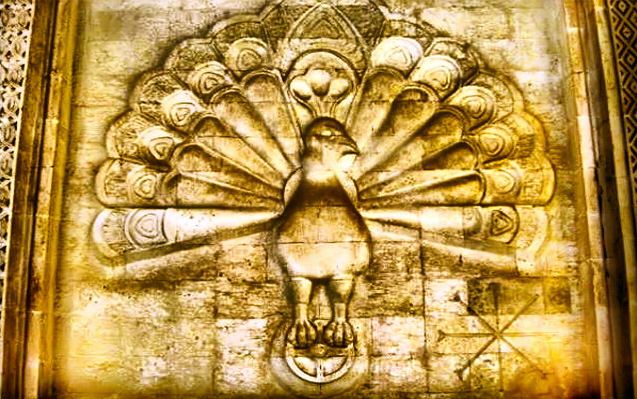For over a week, most of the stories I have read as part of my daily reading have been by E. Hoffman Price. Among them have been stories of two of his series characters, Pierre d’Artois, occult detective, and Ismeddin, a dervish in Kurdistan. According to Alexander Kreitner in the Introduction to the Fables of Ismeddin Megapack Price told H. P. Lovecraft he hoped the tales would aid in “making the public Kurd-conscious”.

In the Pierre d’Artois, you encounter villains devoted to Malik Taûs, whose most common symbol is the peacock. He is always portrayed as the Master of the World. His villainous follows are portrayed as believing they are worshipping Satan. Yet, by the third story, the villain of the second is on d’Artios’s side and argues the worship of Malik Taûs in France (the setting of the first three tales at least) had been corrupted.
Along the way, you learn of other items important to the worshippers of Malik Taûs, such as the Black Book.
Out of curiosity, I searched Malik Taûs with no success. When, in the third story, he was referred to as The Peacock Angel, I searched on that as well.
It was then I learned I was searching on a misspelling. The correct spelling, or at least the moderns transliteration, is Melek Taus, which is Kurdish for Peacock Angel.
He is a central figure of the Yazidi religion. You might not have heard about them before the past decade when Yazidis were a principal target of ISIS.
Yet, an American pulp writer with an affection for the Kurds knew about them enough to know details of their faith enough to incorporate those details into his stories.
Too few authors do that today. One reason is fear of giving offense or being accused of cultural appropriation, a term invented by people who do not understand how cultures grow and change.
You might be thinking that representing the worship of the key figure of faith as Satan worship is not a good thing and would cause offense. Given in the part of the world the Yazidi’s inhabit that is the viewpoint of practitioners of the local dominant faith indicates it’s a realistic portrayal of attitudes towards the faith. I consider faithfulness to reality as an equally valid value as not giving offense. I’d also remind you that it is presented as a corruption of the faith. I wonder if the misspelling is just another part of that corruption.
Either way, I like it. It isn’t the other real-world detail Price includes. I suspect I don’t know half of them. Details taken from reality give his work a depth I’m not used to from pulp adventure tales.
If nothing else, he has introduced me to a wider world.



[…] The Peacock Angel 2021-05-06 […]
[…] What genre? – Herbert Nowell on The Peacock Angel […]